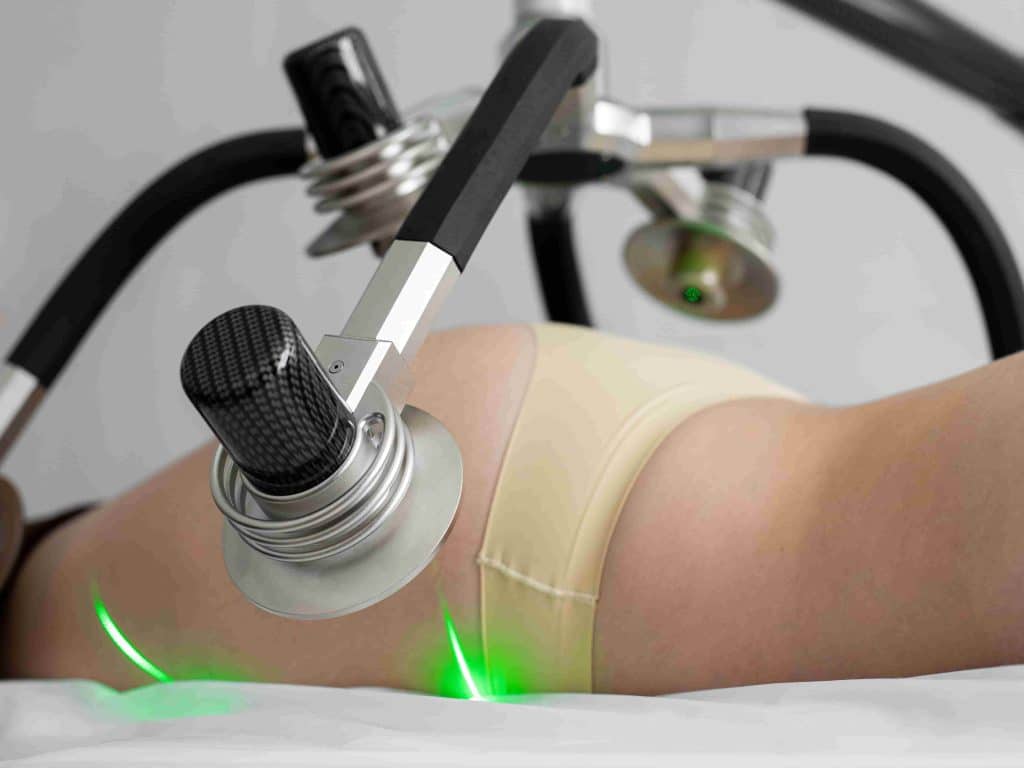With the advancement of technology, we have created many useful tools to make our lives easier. Everything is becoming automated, from getting up in the morning to going to bed, and our innate instinct to do things is diminishing. Consider what might happen to your body if you sit and play games on your phone or play station for an extended time without engaging in appropriate physical activities. Your body will adapt to your lack of activity, and your fat percentage will rise. Your size will grow, but your strength will collapse and become incredibly feeble.
According to a study, increased body fat had a greater impact on the thighs, arms, stomach, and buttocks than on other body areas. This extra body fat appears dull and has a detrimental impact on your lifestyle. Today’s blog will go through the most efficient and simple easiest fat reduction procedures for the thighs. There are numerous workouts that can be used to reduce thigh fat. However, it will take time, and the consequences will not be obvious. So, what should you do to get quick and long-lasting results?
Who Need Thigh Liposuction?
Thailand is famous for its experienced doctors and medical facilities. Therefore, if you are planning for thigh liposuction surgery in Thailand, you should only choose a reliable medical center like Rattinan. Thigh liposuction is a cosmetic procedure that removes extra skin and fat from the patient’s thighs. Excess fat is extracted by a tiny incision in the inner thigh and drained through a disposable straw-like catheter. Thigh liposuction is a procedure that removes localized deposits of body fat, often resulting in a weight loss of 20 pounds or more. It is not intended to form the body as a whole but to contour specific body parts.
As the structure of the thighs is heavily influenced by DNA, the weight that accumulates around the thighs with ageing is difficult to remove, even with rigorous exercise. In addition, because the skin loses flexibility as we age, we tend to accumulate extra fat around the buttocks and lower torso. Therefore, an unhealthy lifestyle and a lack of exercise can cause unwanted fatty thighs. Liposuction is a medical procedure that can significantly slim the thighs. This is a treatment that improves the physiology of the person receiving it and the person’s lifestyle.
Thigh Liposuction Using BodyTite:
There are a lot of liposuction techniques available for different types patients. All the technics works for same purpose of reduces excessive fat but with slight changes in procedure. Liposuction using Bodutite is different from normal or traditional thigh liposuction. It reduces the fat as well as tightnes the skin of patient.
BodyTite works in a similar way to previous liposuctions to decrease fat. The sort of energy required to break down the fat cells differs. BodyTite does not use a laser to dissolve fat cells; instead, it employs Radio-Frequency Assisted Liposuction (RFAL). However, the true benefits of BodyTite are found in what happens to the skin throughout the therapy. Your skin may become saggy after general liposuction. A BodyTite can tighten your skin and make it appear more toned and firm.
How is the Treatment done?
The duration of the procedure is determined by the quantity of fat removed from the thighs. In most situations, the procedure takes only a few hours, and the patient is not required to stay overnight afterwards. However, in some situations, the patient may be required to stay longer to avoid potential risks. The patient is anaesthetized at the start of the surgery.
The type of anaesthetic required is also determined by the amount of fat removed. It is generally local anesthesia for thigh liposuction with BodyTite.
The surgeon makes small cuts through which the cannula is put into the fatty tissues. This inside electrode cannula transmits radiofrequency (RF) energy to an external electrode, coacervating adipose vascular and fibrous tissue at the same time. The target structures for skin tightening are really the subdermal and subcutaneous layers, which are heated directly by this combination method.
The fat is then slowly sucked out using a suction device. Your surgeon will then may use traditional liposuction to suck the excessive liquified fat from the body. Then the surgeon will stich your wounds, and you will be discharged in a day or two.
Are you eligible for BodyTite Thigh Liposuction?
If you have obese thighs and are in good health, you can get this treatment. The thigh liposuction can be performed on the inner, outer, or both thighs. Your body may be prone to retaining fat in a certain place, which is why some women have “saddlebags” on their outer thighs or “chub rub” on their inner thighs. Liposuction is a fantastic option in these situations since surgery can permanently remove fat cells in the area, changing your body’s general shape regardless of whether you lose or gain weight later on.
Who is not an eligible person for this surgery?
Liposuction is highly beneficial, but not everybody is a good candidate for this surgery. If you have chronic medical issues or no realistic expectations, you should never go for this treatment. Most surgeons will classify you based on your overall health to estimate the risk of surgery. Certain underlying disorders may disqualify you even if you perceive yourself to be in good health. During your consultation, your doctor will go over these with you. Asthma, diabetes, and high blood pressure are all common red flags for thigh liposuction.
Post-Treatment Guidelines and Results:
Immediately after thigh liposuction, patients should expect some level of discomfort, bruising, and swelling. The use of compression garments and prescription medication can help relieve these symptoms, and most patients can return to light work less than a week after surgery. However, strenuous physical activity will be off-limits for up to 4 – 6 weeks or until cleared by your trusted surgeon at Rattinan in Thailand. Also, it would be best never to ignore your doctor’s guidelines to reduce the associated complications.





M.D. (Hons), 1994 (Born 1970) * Certificate of Aesthetic Medicine, American Academy of Aesthetic Medicine * Certificate of Advanced Filler & Botulinum Toxin Injection * Certificate of Bodytite Liposuction (Canada) * Certificate of Weight & Metabolism Management , University of Sydney * Special Clinical interests
– Laser Surgery – Botulinum toxin Injection – Dermal filler